Results for Level 3 qualifications, including A-Levels and T-Levels, are out later this week. As ever, we’ll be posting analysis of the main trends on the day. If you want to make sure you don’t miss anything, you can sign up now to receive our analysis as it comes out.
But in the meantime, we’ve put together this preview post rounding up everything that we’ll be looking out for on the day.
1. No big changes in A-Level grades
For the last few years, the biggest headlines around A-Levels have all been about grading. In the pandemic years, the number of entries receiving top grades shot up, with more than 40% receiving an A or A* grade in 2021.
When public exams returned in 2022, grade boundaries were adjusted to avoid a huge slump in grades, and last year they were returned to pre-pandemic levels.
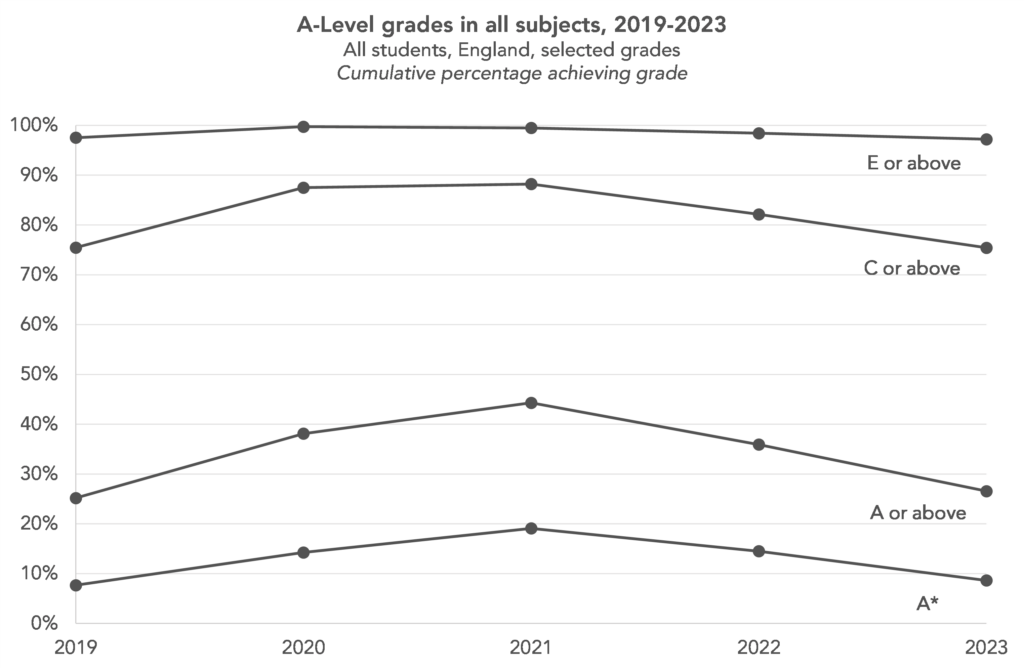
This year, we expect to see a similar distribution of grades as we did last year – that is, we expect about a quarter of entries to receive an A or A* grade.
2. A surge in T-Level entries… but keep an eye on drop-out rates
The introduction of T-Levels, which began in 2020, was the victim of unfortunate timing. Securing the required industry placements for students would be a challenge at the best of times, but during the height of the pandemic it was particularly tricky.
And no doubt this contributed towards worryingly high drop-out rates among students who were due to complete T-Levels last year.
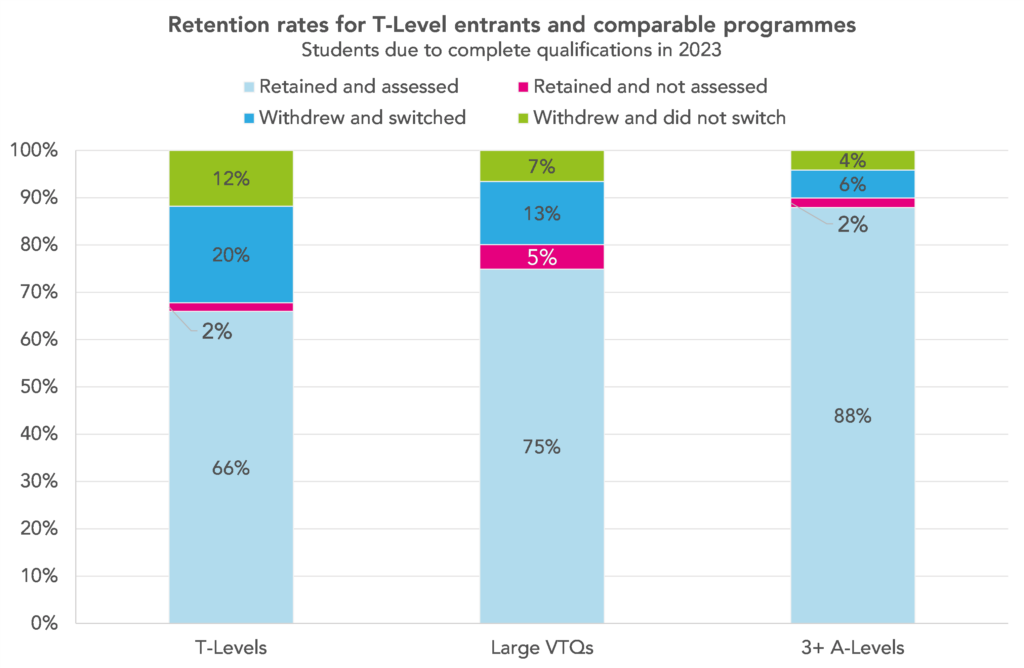
A third of T-Level students dropped out, according to government figures, compared to a quarter of those taking other large vocational and technical qualifications (VTQs) and less than an eighth of those taking A-Levels.[1]
Most of those who dropped out switched to another course, but for a substantial minority no record could be found of them taking up an alternative.
Despite their troubles, we expect a sharp uptick in the number of T-Level entries this year. 5,321 students started courses due to complete last year; it is estimated that more than twice that started courses due to complete this year.[2]
3. What next for other Level 3 vocational and technical qualifications?
With the rise of T-Levels, the fate of alternative vocational and technical qualifications (VTQs), including qualifications such as BTECs, VRQs and Cambridge Technicals, is uncertain.
Entries to these qualifications dwarfed the number of T-Level entries last year, with 10,906 students completing a large VTQ compared to just 3,510 students completing T-Levels.[3]
But as the roll out of T-Levels rumbles on, more qualifications are becoming available, potentially encroaching more and more on ground previously covered by other VTQs. Students completing T-Levels last year had just ten subjects to choose from; those completing this year had 16.
Partly because of the roll-out of more subjects, T-Level entries are set to increase this year, as we’ve just seen. And, as we’ll see in a moment, so are A-Level entries. It will be interesting to see what impact this has on entries to other Level 3 VTQs.
The uncertainty around future funding of BTECs and other VTQs may also have caused some VTQs to decline in popularity this year, and, if defunding does go ahead, will certainly have an impact in the future.
We may not see data on entries to VTQs published on results day, but we’ll be keeping our eyes peeled later in the year.
4. A small increase in A-Level entries
The number of A-Level entries has been increasing since 2020, and we expect around 100,000 more entries this year than there were in 2020.[4]
This is partially, but not entirely, explained by the infamous ‘population bulge’ moving through the education system. But while the 18 year-old population has increased by around 9% between 2020 and 2024, the number of A-Level entries has increased by nearly 13%.
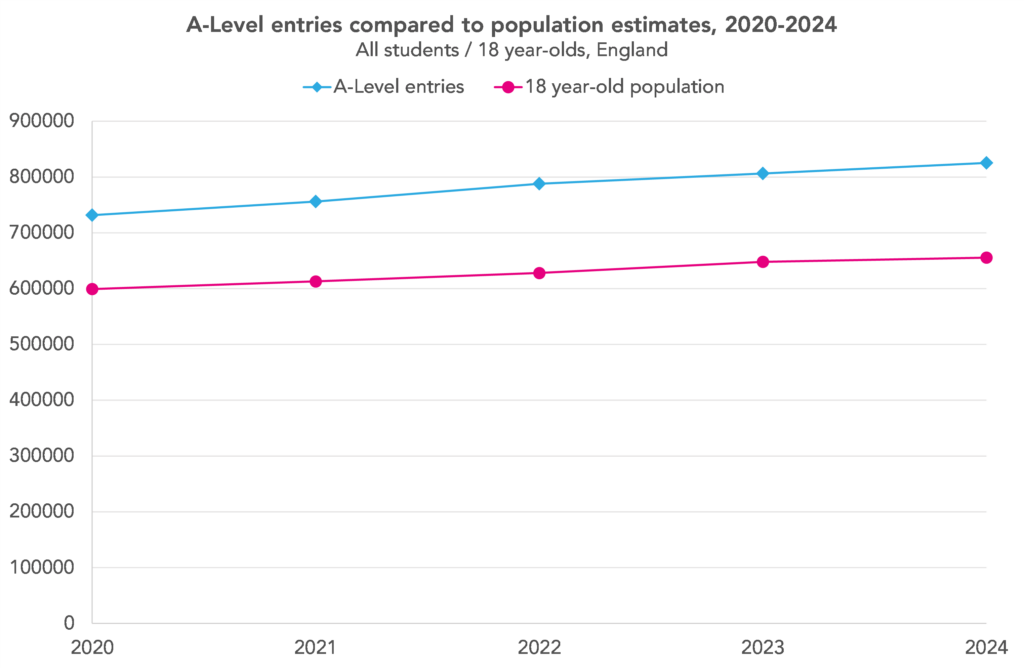
And we’re expecting another increase in entries above population increase this year: provisional entries data predicts an increase in entries of 2.4%, twice the increase in population.
5. The rise and rise of computer science
According to Ofqual’s provisional entry figures, the most popular A-Level subjects remain the same as last year: maths, psychology and biology.
But some subjects have received a boost in entry numbers this year, with STEM subjects including further maths, physics and computer science among those with the biggest increases.
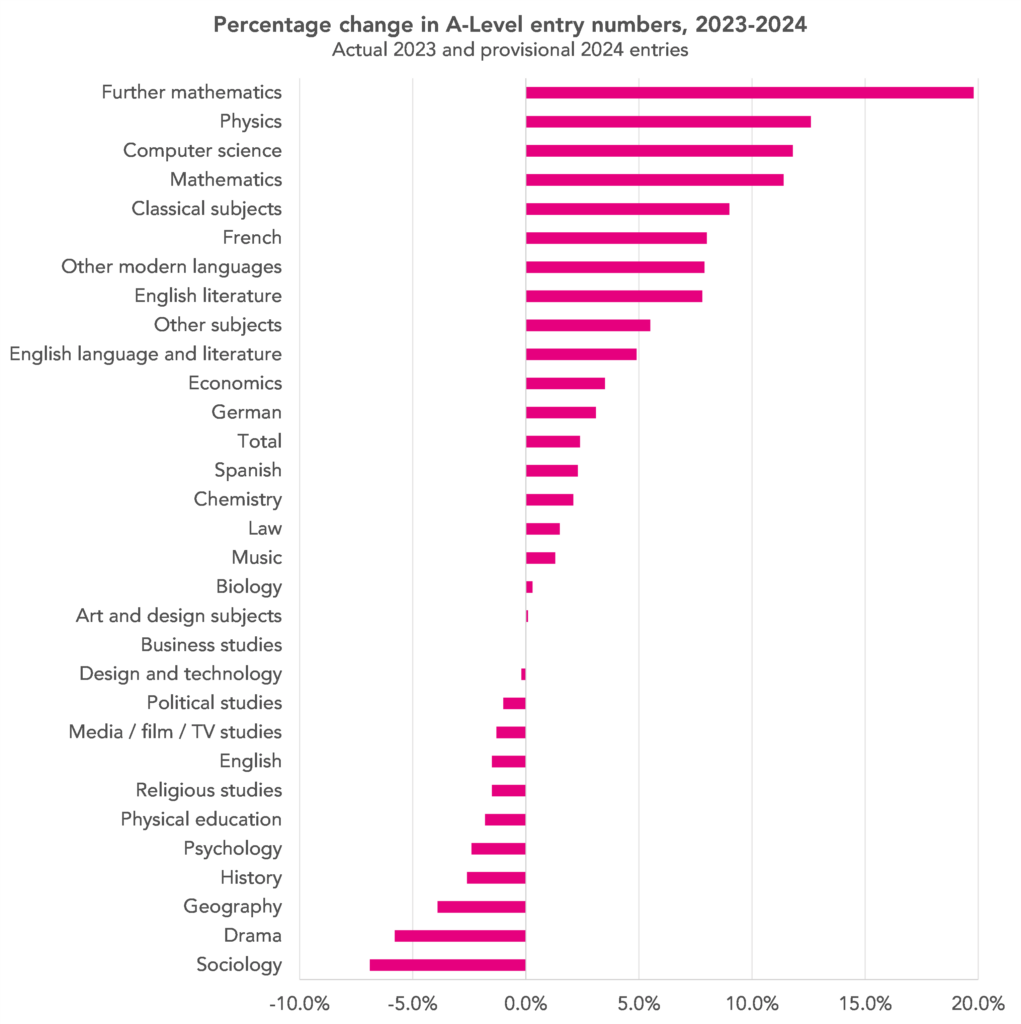
Subjects with the largest fall in entries include sociology, drama and geography. And religious studies is the only subject which has seen a consistent fall in entries over each of the last three years.
A handful of individual subjects have seen consistent increases over the last three years, with computer science and economics seeing the sharpest rises.
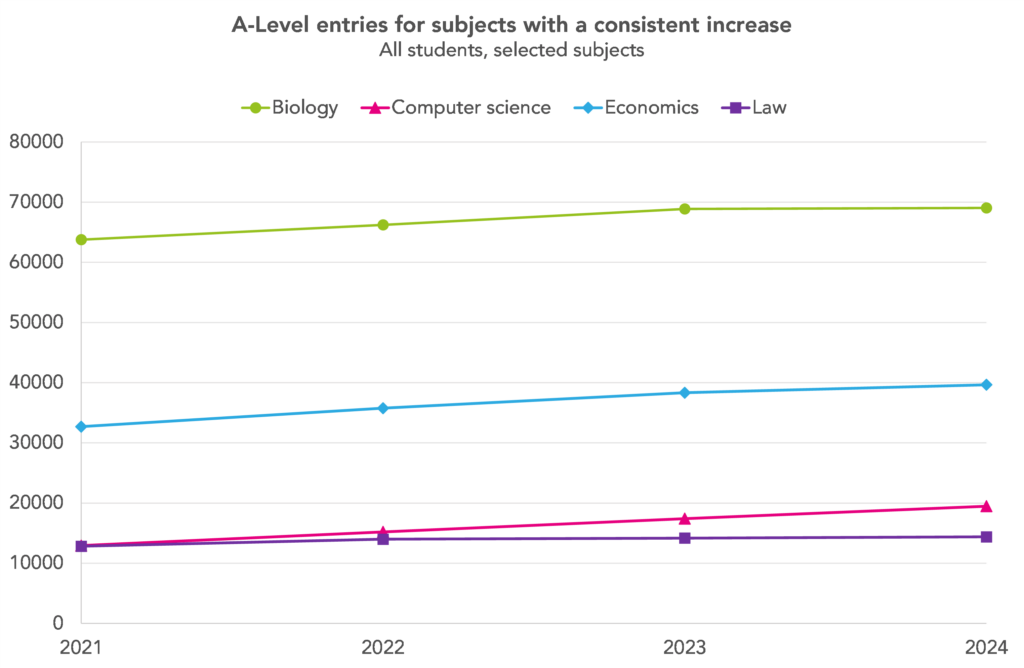
That’s all folks
And that’s it for now. But don’t forget to check back here on results day for our round-up of everything you need to know. We’ll be covering everything we’ve talked about in this post, plus any surprises that crop up on the day.
Want to stay up-to-date with the latest research from FFT Education Datalab? Sign up to Datalab’s mailing list to get notifications about new blogposts, or to receive the team’s half-termly newsletter.
[1]: Figures taken from table 7 of the analytical annex of the 2023/24 T-Level action plan.
[2]: Figures from the 2022/23 T-Level action plan.
[3]: Again, figures taken from table 7 of the analytical annex of the 2023/24 T-Level action plan.
[4]: Figures in this section taken from Provisional entries for GCSE, AS and A level: summer 2024 exam series and previous entries in the same series.




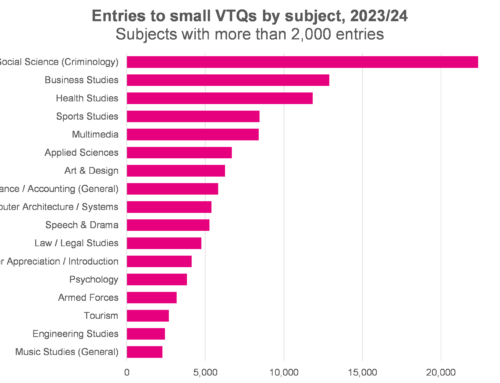
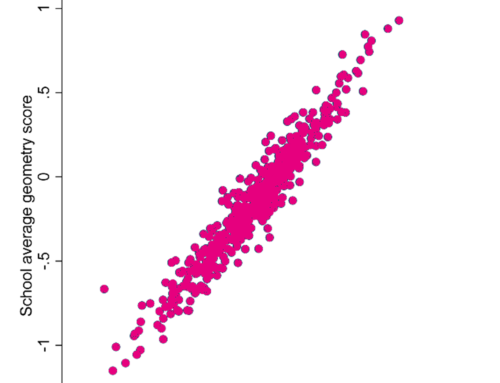


Leave A Comment